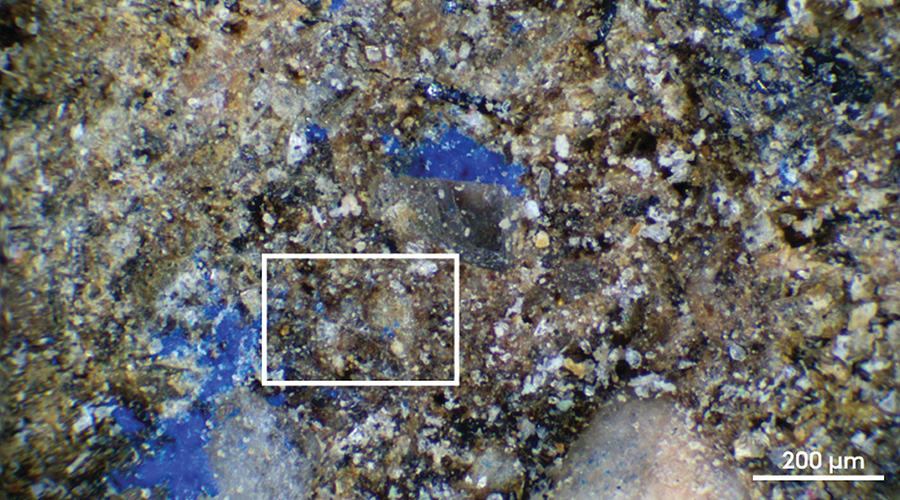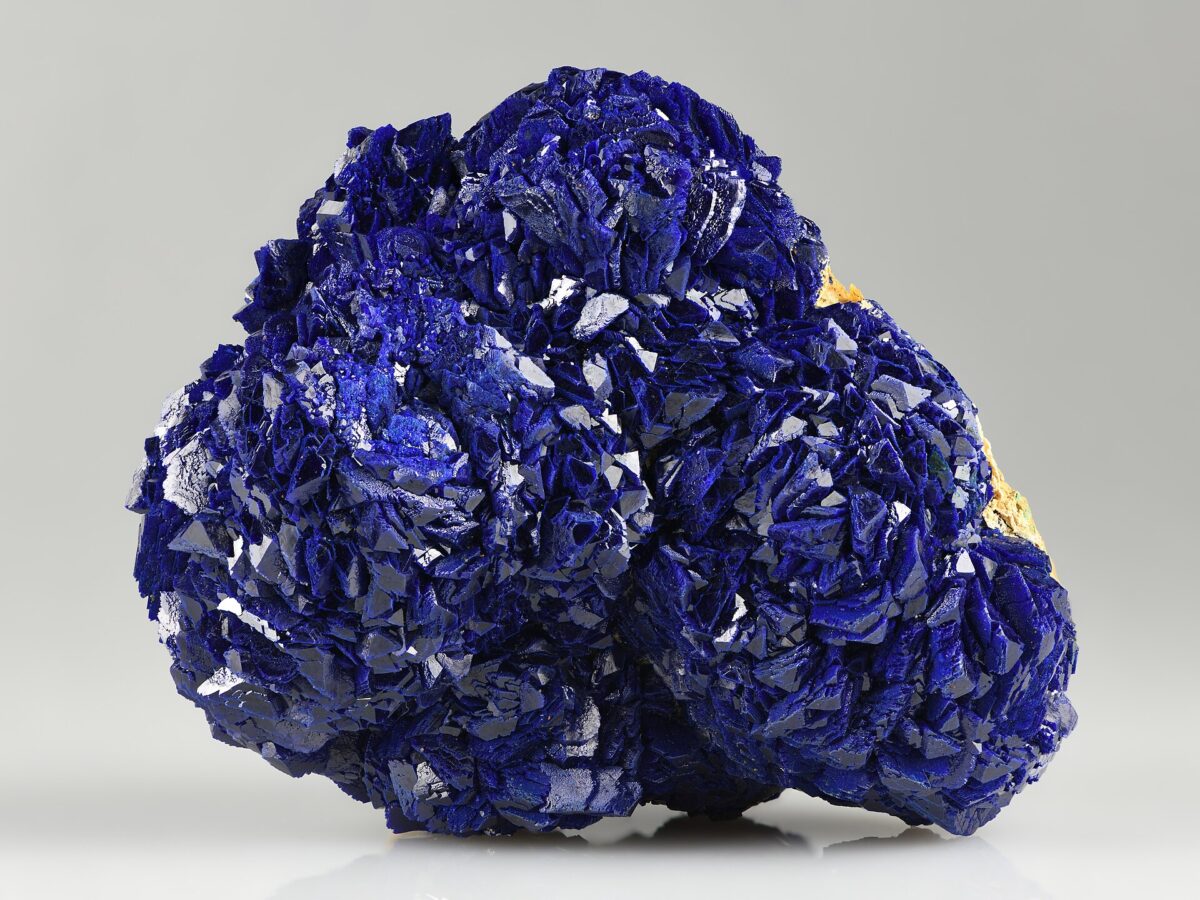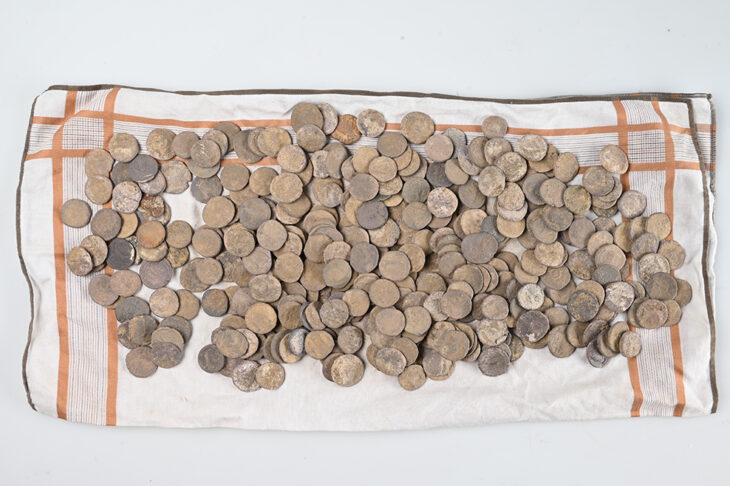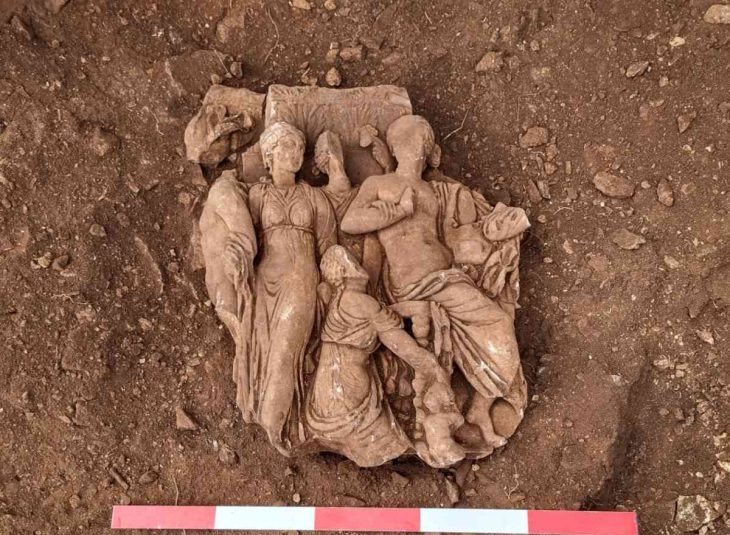Archaeologists in Germany have uncovered the earliest evidence of blue pigment ever used in Europe, rewriting our understanding of Stone Age color practices. The discovery, published in Antiquity by an international research team led by Aarhus University, reveals that humans living around 14,000 years ago ground and processed azurite, a copper-based mineral, inside a bowl-shaped stone at the riverside site of Mühlheim-Dietesheim near Frankfurt.
Until now, Europe’s Paleolithic art record seemed curiously limited to red, yellow, black, and white pigments. Blue, though widely available in nature, was conspicuously absent. According to the Independent, “virtually all palaeolithic paintings so far discovered in Europe and around the world were created mainly using red, white, yellow and black pigments.” This absence made the new find “a stunning surprise” for archaeologists.
A Stone Age Paint Box Beside the Main River
The artifact—a sandstone piece with a natural concavity—was originally unearthed during excavations in the late 1970s but re-examined with modern techniques only in 2023–2024. Advanced archaeometric analyses, including X-ray fluorescence, Fourier transform infrared spectroscopy, and multiband imaging, confirmed that the microscopic blue traces were not contamination but genuine prehistoric azurite residue.
Lead isotope studies further showed that the mineral likely came from local deposits along the River Main valley, suggesting that late Magdalenian foragers deliberately collected or mined azurite outcrops nearby. Alongside the paint box, excavations also yielded stone tools, arrowheads, and the remains of a circular tent structure, indicating a small family campsite on the riverbank.

Why Blue Matters
Blue’s rarity in Paleolithic art has long puzzled researchers. Ochres and charcoals were abundant, while azurite was rarer and harder to process. Yet, as the Independent notes, “minerals for making blue pigments are rarer than sources for other primary colours.” This scarcity may have imbued the color with symbolic or protective power. Across many cultures, blue has been linked with the divine and believed to ward off evil spirits.
📣 Our WhatsApp channel is now LIVE! Stay up-to-date with the latest news and updates, just click here to follow us on WhatsApp and never miss a thing!!
The scientific team suggests that instead of painting cave walls, early Europeans may have reserved blue for ephemeral or personal uses—body painting, decorating clothing, or adorning ritual objects. Such uses would leave little archaeological trace, explaining why Europe’s cave art corpus lacks blue even though the mineral was available.
Comparable cases are slowly emerging elsewhere. A 2017 study revealed blue-painted Siberian figurines, while a 2024 paper documented plant processing in Georgia possibly linked to blue pigment manufacture some 33,000 years ago. Together, these findings hint that prehistoric societies experimented more widely with color than previously recognized.
Rethinking Prehistoric Aesthetics
Dr. Izzy Wisher, lead author of the Antiquity study, emphasizes that this is “only the tip of a prehistoric colour iceberg.” She explained that new atomic and molecular techniques now make it possible to detect faint, previously invisible pigments. As she told the Independent: “Our discovery of blue pigment is likely to be just the tip… we hope to eventually reveal the Stone Age world in full colour.”
The implications extend beyond art history. Pigment use is often seen as a marker of symbolic thought and cognitive complexity in early humans. The deliberate selection of azurite suggests that Final Palaeolithic communities were not only technologically adept but also engaged in subtle aesthetic and ritual behaviors that go far beyond the famous cave paintings of Lascaux or Altamira.
Europe’s First Glimpse of Blue
For now, the modest sandstone “palette” from Mühlheim-Dietesheim stands as Europe’s oldest known example of blue pigment. It challenges archaeologists to look again at overlooked artifacts in museum drawers, where similar residues may still be hiding.
The discovery highlights how new science can transform old finds. Half a century ago, the artifact was catalogued as a possible lamp. Today, thanks to advances in archaeometry, it illuminates something else entirely: the lost colors of Europe’s deep past.
Wisher, I., Birch, T., Andreasen, R., Canosa, E., Norrehed, S., Reguer, S., … Riede, F. (2025). The earliest evidence of blue pigment use in Europe. Antiquity, 1–16. doi:10.15184/aqy.2025.10184
Cover Image Credit: A photo of the azurite mineral, as found in nature. Wikimedia Commons
















